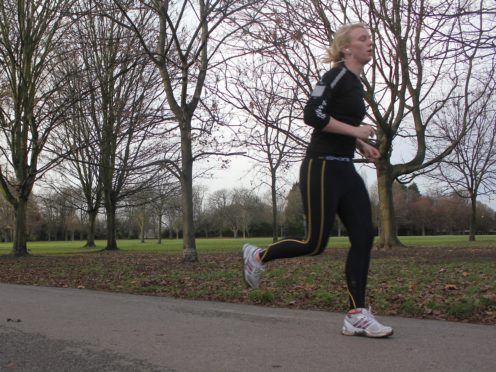Using anti-bacterial mouthwash could reduce the benefits of exercise, a study has found.
Physical exertion is known to lower blood pressure but the effects are significantly reduced when people use mouthwash instead of water.
A team of international scientists said the results showed the importance of oral bacteria in cardiovascular health.
They are urging health professionals to pay attention to the oral environment when recommending interventions involving physical activity for high blood pressure.
The study was led by the University of Plymouth in collaboration with the Centre of Genomic Regulation in Barcelona.
Researchers asked 23 healthy adults to run on a treadmill for 30 minutes on two separate occasions, after which they were monitored for two hours.
At one, 30, 60 and 90 minutes after exercise they were asked to rinse their mouths with a liquid – either antibacterial mouthwash or a placebo of mint-flavoured water.
Their blood pressure was measured and saliva and blood samples were taken before exercise and at 120 minutes after exercise.
The study found that when participants rinsed with the placebo, the average reduction in systolic blood pressure was minus 5.2 mmHg at one hour after exercise.
When participants rinsed with the antibacterial mouthwash, the average systolic blood pressure was minus 2 mmHg at the same time point.
The results show the blood pressure-lowering effect of exercise was diminished by more than 60% over the first hour of recovery, and totally eradicated two hours after exercise when participants were given the antibacterial mouthwash.
Lead author Dr Raul Bescos, from the University of Plymouth, said: “Scientists already know that blood vessels open up during exercise, as the production of nitric oxide increases the diameter of the blood vessels, increasing blood flow circulation to active muscles.
“What has remained a mystery is how blood circulation remains higher after exercise, in turn triggering a blood pressure-lowering response known as post-exercise hypotension.
“Previous research has suggested that nitric oxide was not involved in this post-exercise response – and only involved during exercise – but the new study challenges these views.
“It’s all to do with nitric oxide degrading into a compound called nitrate, which for years was thought to have no function in the body.
“But research over the last decade has shown that nitrate can be absorbed in the salivary glands and excreted with saliva in the mouth.
“Some species of bacteria in the mouth can use nitrate and convert into nitrite – a very important molecule that can enhance the production of nitric oxide in the body.
“And when nitrite in saliva is swallowed, part of this molecule is rapidly absorbed into the circulation and reduced back to nitric oxide.
“This helps to maintain a widening of blood vessels which leads to a sustained lowering of blood pressure after exercise.
“We wanted to see whether blocking nitrate’s ability to convert into nitrite by inhibiting oral bacteria would have any effect on post-exercise hypotension.”
Co-author Craig Cutler said: “It’s like oral bacteria are the ‘key’ to opening up the blood vessels. If they are removed, nitrite can’t be produced and the vessels remain in their current state.
“The next step is to investigate in more detail the effect of exercise on the activity of oral bacteria and the composition of oral bacteria in individuals under high cardiovascular risk.”
– The study is published in the journal Free Radical Biology and Medicine.
